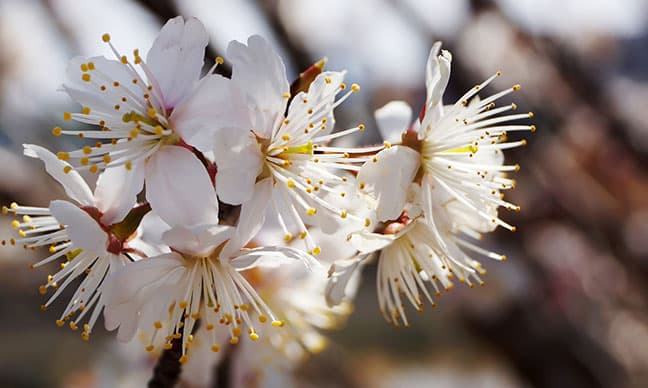With a huge variety of fruit trees for San Antonio, choosing the right one for your yard can be quite a task. Usually, things you want to pay attention to is whether the fruit can survive the area’s climate, whether you can protect it from wildlife, and of course, whether you will like the fruit it provides. In addition, soil, sun, and water play a huge part in the fruit tree’s development and health.
In this article, we will talk about popular fruit trees San Antonio choices and which tree would be the best for your needs and garden!
Fruit Trees for San Antonio – Popular Types with Tasty Fruit
1. Apples
Apples are one of the most popular fruit trees for San Antonio. They are fairly easy to grow and you get to choose a variety that you prefer. Usually, it is ideal to plant two varieties since they do require cross-pollination. The major cause of tree loss is cotton root rot and fire blight. So, don’t hesitate to contact a tree service Texas company if you notice any worrying symptoms.
There are three main categories when it comes to apples: standard, semi-dwarf, and dwarf. Avoid planting spur-type varieties near full dwarf rootstocks. Keep in mind that apples usually require thinning due to the amount of fruit they produce.
2. Pears
Pear is a tree that produces very tasty and refreshing fruit. However, they are considered as one of the harder trees to maintain since they are vulnerable to diseases. Cotton root rot and fire blight are the main reasons why people avoid planting pears in their backyard. Still, don’t be discouraged since this tree can be very valuable if you plant it in the right spot and maintain it regularly.
In order to ensure a good fruit set, always plant at least two pear varieties close to each other. Some Asian varieties are known for high-quality fruit, so give them a thought. Pears usually produce a lot of fruit, similar to apples, and the fruit is very healthy and rich in nutrients, which is why they are one of the best trees to plant in San Antonio!
3. Blackberries
Blackberries are fruit trees San Antonio simply loves! They are one of the easiest small fruit crops to grow in the area and they produce a lot of healthy and nutritious fruit. As long as drainage is good, they can do well in a wide variety of soils. When properly managed, blackberries can produce up to a gallon of berries per foot of row. Keep this in mind since you want to plant just the right amount of trees, don’t overpopulate.
When planting, set young plants 2-3 feet apart in the same row. Most varieties don’t require support or a trellis, but in some cases, you might need to use it. If you’re unsure, speak to some of the tree services San Antonio to get help on how to plant a blackberry tree properly. This tree requires frequent watering, especially when it’s young. When the tree matures, some moisture stress won’t be harmful to a tree.
An extensive pesticide program is usually not required. Keep in mind that blackberries will probably attract birds and other wildlife, so choose the right spot for a tree before you plant it.
4. Blueberries
Water, care, and proper soil are essential for blueberries. This fruit tree requires sandy, acid soil with a pH between 4.5 and 5.5. Also, good water quality that’s low in bicarbonates and sodium is extremely important for the healthy development of this tree. They thrive best in soils with composted organic matter. Clay or calcareous soils are almost impossible to modify properly for this fruit tree.
Adequate cross-pollination is required, so make sure you plant at least two blueberry varieties. Use hay, wood chips, grass clippings, leaves, sawdust, and pine bark to mulch plants heavily. This aids in weed control and moisture conservation. Over-fertilization can be a big problem for blueberries.
5. Peaches, Nectarines, and Plums
Stone fruits can produce bountiful crops of delicious fruit. However, these trees are very susceptible to diseases and pests, which is why they are relatively short-lived and, unfortunately, not one of those fruit trees San Antonio prefers. This is also a reason why you want to avoid planting these as specimen trees in attractive parts of your landscape.
Some varieties that adapt pretty well usually set good crops. Still, their early bloom makes them all susceptible to crop damage that can happen during spring freezes. In addition, you probably have to come up with some control measures in order to allow your tree to produce edible fruit.
Also, thinning and pruning are required for consistent production and healthy development. Pruning allows vigorous growth and keeps trees in good shape. You can do thinning by yourself when fruits are about the diameter of a dime.
FAQ
Q: What are the easiest fruit trees to grow?
A: The easiest fruit trees to grow in San Antonio are probably apples. They don’t require too much maintenance and you get to choose a variety that you prefer. Also, apples produce a lot of highly nutritious fruit that’s very refreshing during hot Texas summers.
Q: What is the smallest fruit tree?
A: It is hard to determine what fruit tree is the smallest since the height can vary depending on the environment. However, dwarf apples are considered as one of the smallest fruit trees in San Antonio. It matures up to 10 feet in height and also gives an ornamental value to a landscape.
Related Post: Small Trees For San Antonio
Local Tree Experts Overview
The first thing you need to have in mind when planting a fruit tree is the spot where you want to put it. Bear in mind that fruit trees attract birds and wildlife, so maybe you want to keep it protected. Once you made a decision, refer to this article to choose the right type of tree for you. Fruit trees for San Antonio are usually fairly easy to grow and they don’t require too much maintenance. Consult with your local arborist if you have any questions about caring for your fruit tree!




